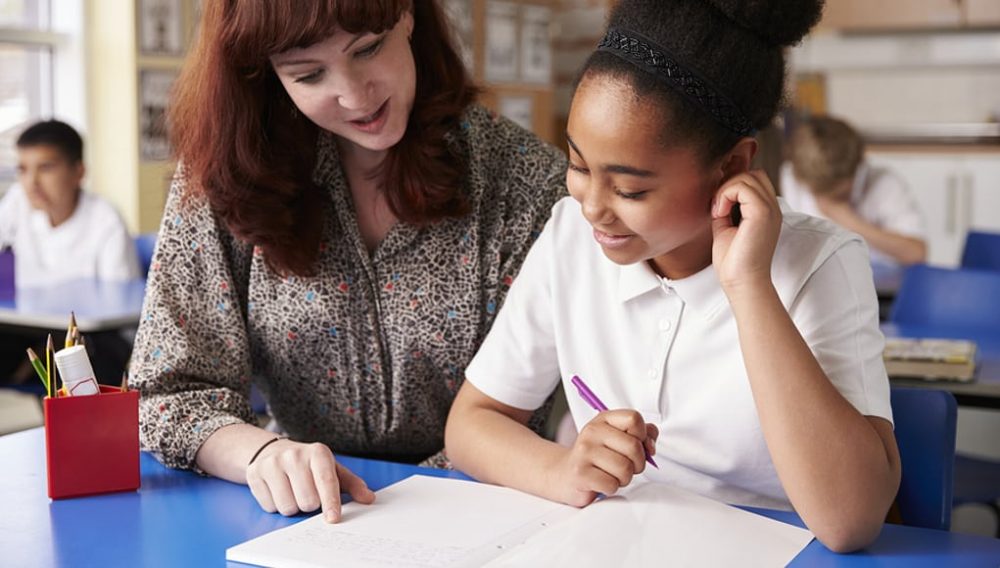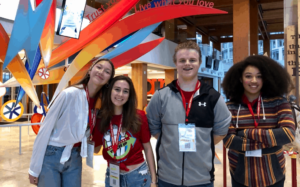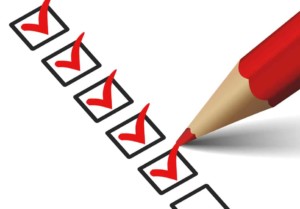A 21st Century Model of Special Education

By: Megan Gross and Ace Parsi
A cassette in an iPhone world. A horse and buggy in the age of NASCAR. These are just a few of the analogies that have been used to describe our education system as it struggles to address the needs of an ever-changing world. But what is often left out of the conversation is the reality facing students in special education. Students with disabilities often don’t even have access to the cassette or horse and buggy, and segregated learning is all too often the model used by schools. We know that the vast majority of our students with disabilities are capable of doing the same level of work as their peers without disabilities. They will be entering the same world as their peers, a world where rote tasks are increasingly automated or outsourced. And yet we do little to prepare them for their future.
The reality of segregated learning environments can impact students and their educators. A special education student may lack access to Advanced Placement (AP) courses, International Baccalaureate (IB) courses, or rigorous out of school learning opportunities. Their special education teacher may lack access to shared training with their general education counterparts on new ways to educate students. Students and educators both suffer as a result of separation from and lack of interaction with their peers and colleagues. An inclusive society demands that we get beyond this.
Reports such as Education for Life and Work, by the National Research Council, highlights the need for transferable skills, including critical thinking and problem solving, collaboration, communication, growth mindsets, and more. In light of this trend, general and special educators alike must ask which of these skills are most lacking and most needed for the future success of our students with disabilities. NCLD’s new report, Agents of Their Own Success, highlights skills associated with self-advocacy and self-determination as key areas for consideration.
Self-advocacy is defined as a set of skills based on self-knowledge, including awareness of personal strengths and limitations, knowledge of one’s rights and the ability to communicate this understanding. Self-determination is an empowered state in which individuals take charge of their lives, make choices in their self-interest and freely pursue their goals. While it’s true that every student needs these skills and capacities, one needn’t think long to identify why these are especially important for students with disabilities. If you’re in a post-secondary classroom and no longer have the benefits of a dedicated individualized education program (IEP) team, you need to quickly learn to be a self-advocate for your accommodations. Similarly, navigating what types of accommodations you need in the workplace and approaching your supervisor on in the job site to request these supports takes a great deal of self-determination.
Knowing that students with disabilities will face these and countless similar scenarios throughout their lives, it is our responsibility in K-12 education to effectively prepare them. The key is to not simply assume this will happen without dedicated attention but to instead take a more explicit route through three channels.
1. Create Specific Self-Advocacy and Self-Determination IEP Goals.
If self-advocacy skills and self-determination are to get the attention they deserve from educators, parents, and students, we must make them explicit within the student IEP. IEP goals targeting these 21st Century skills are essential for students to build a foundation for being change agents in their own lives and must be more than expressing needs and wants. In addition, IEP goals that focus on building students’ knowledge of who they are as learners, what accommodations are essential to their learning and how to communicate that to support staff, teachers, or future employers are essential for success as an independent adult. For example, an IEP goal might read:
- “Student will be able to create a written letter of introduction that explains his strengths, interests, disability, and accommodations he needs to be successful with academics, socially, and communication and share this letter with one individual (teacher, parent) before graduation.” or
- Given a problem-solving scaffold and role-play scenarios, a student will be able to state the problem, identify possible solutions, identify the appropriate person to talk with, and explain how that person can help, with 75% accuracy for 4 of 5 opportunities as measured by student work samples.
2. Involve Students in the IEP and Transition Process.
Even more than the IEP goals themselves, we need to be more mindful of the IEP and transition process, ensuring it’s more engaging and inclusive of students. All students with IEPs, even those at the primary grades, have a role to play in their IEP meetings. Recently, our high school team reflected on comments many of our students with IEPs were making. They were asking, “What’s an IEP?” and saying, “Oh, I don’t have a disability.” We realized that, while were effectively supporting their academic success and were presenting them with great college and career opportunities after high school, we were missing the opportunity to give our students the knowledge and tools for how to navigate disability support systems beyond K-12. As a result, our team developed weekly mini-lessons that focused on helping students learn the terminology used in IEPs, actually becoming familiar with their own IEPs, asking questions and making recommendations about their future, and understanding and evaluating the accommodations they’re using. Students created presentations about themselves, their interests, their strengths, and areas they wanted to improve for the year ahead. Students then shared these presentations at the start of their IEP meetings. For many, this was the first time students in high school had ever attended or spoken at their own IEP meeting.
3. Connect Students to In and Out of School Experiences That Promote Goals.
Lastly, we need to connect in-school and out-of-school experiences more cohesively to ensure more practical opportunities to practice these skills. Our students need opportunities to practice and refine their skills in self-advocacy. While some are confident in approaching their teachers, counselors, or even the principal, others need more support and even scaffolding.
This year, we explicitly taught students how to request a meeting with a general education teacher, provided a script they could use if they wanted to, and the role played how to request feedback and develop goals for improvement in a course. In their reflections on the experience, students and teachers felt this was a positive experience and appreciated the student initiative and responsibility in this process.
In conclusion, if we are going to prepare all students — including students with disabilities — for success after high school, we need a changing tide in how we approach education. At the same time, it’s essential that the changing tide truly lift all boats. If we are explicit and intentional about how we empower students to become self-advocates and develop the skills they need to navigate life’s challenges after they leave secondary school, we have the opportunity to make a meaningful contribution to the next chapter of educational and civil rights.
Ace Parsi is the Personalized Learning Partnership Manager at the National Center for Learning Disabilities (NCLD). Connect with them on Twitter @ncldorg
Megan Gross is a special education teacher and was the 2017 California State Teacher of the Year and a National Teacher of the Year Finalist. Connect with her on twitter: @MegNGross
For more, see:
- Working with Special Needs Students: What Do All Teachers Need to Know?
- Bridging the Knowledge Gap of Special Education Students
- Inclusive Special Education via Project-Based Learning
- How Project-Based Learning Helps Special Needs Students Collaborate and Connect
Stay in-the-know with all things EdTech and innovations in learning by signing up to receive the weekly Smart Update.





0 Comments
Leave a Comment
Your email address will not be published. All fields are required.